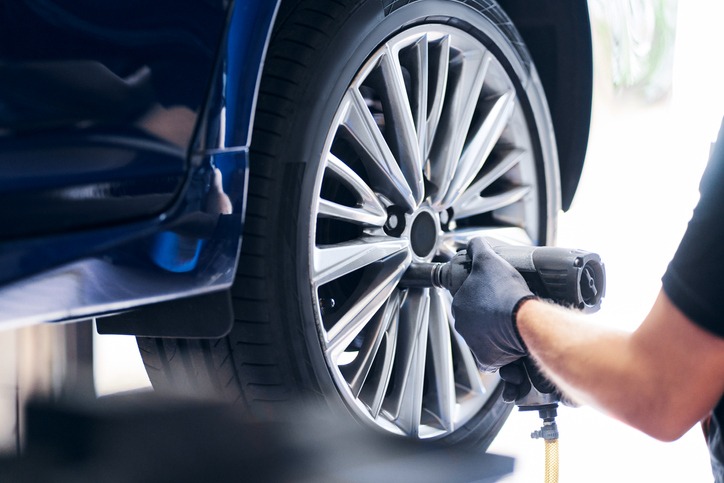Top Tire Maintenance Tips for a Smooth Ride
Your vehicle’s tires are its only point of contact with the road, making proper tire maintenance essential for safety, performance, and longevity. Neglecting tire care can lead to decreased fuel efficiency, compromised handling, and even increased risk of accidents. To help you ensure a smooth and safe ride, we’ve compiled a list of expert tire maintenance tips that every driver should know.
1. Regularly Check Tire Pressure
Maintaining the correct tire pressure is crucial for optimal performance and safety. Under-inflated tires can lead to increased fuel consumption, premature wear, and decreased traction, while over-inflated tires can cause handling issues and uneven tread wear. Consult your vehicle’s owner’s manual or the sticker located inside the driver’s side door jamb for the recommended tire pressure, and check it at least once a month using a reliable tire pressure gauge
2. Inspect Tread Depth
Tread depth plays a significant role in maintaining traction and handling, especially in wet or snowy conditions. To ensure your tires have adequate tread depth, perform regular inspections using a tread depth gauge or the “penny test.” Insert a penny into the tread grooves with Lincoln’s head upside down. If you can see the top of Lincoln’s head, it’s time to replace your tires. Additionally, look for signs of uneven wear, which may indicate alignment or suspension issues that require attention from a tire repair specialist.
3. Rotate Your Tires Regularly
Uneven tire wear is a common issue that can compromise handling and performance. To promote even wear and extend the lifespan of your tires, rotate them regularly. Most manufacturers recommend rotating tires every 6,000 to 8,000 miles, or as specified in your vehicle’s owner’s manual. Regular tire rotation ensures that each tire wears evenly, maximizing its longevity and performance.
4. Maintain Proper Wheel Alignment
Proper wheel alignment is essential for ensuring even tire wear and optimal handling. Over time, factors such as driving over potholes, hitting curbs, or normal wear and tear can cause misalignment. Signs of misalignment include uneven tire wear, steering wheel vibration, and drifting to one side while driving. If you notice any of these symptoms, schedule a wheel alignment with a reputable tire repair shop to prevent further damage to your tires and suspension components.
5. Keep Your Tires Clean
Regularly cleaning your tires not only enhances their appearance but also helps maintain their condition. Brake dust, road grime, and other contaminants can accumulate on your tires, potentially causing deterioration over time. Use a mild detergent and a soft brush to gently scrub the tires, being careful not to damage the sidewalls or tread. Rinse thoroughly with water and allow them to dry completely before applying a tire dressing to protect against UV rays and keep them looking new.
6. Inspect for Signs of Damage
Regular visual inspections can help you identify potential issues before they escalate into major problems. Look for signs of damage such as cuts, punctures, bulges, or cracks in the sidewalls. These issues can compromise the structural integrity of the tire and increase the risk of a blowout. If you notice any signs of damage, promptly take your vehicle to a reputable tire repair shop for evaluation and potential replacement.
7. Be Mindful of Load Capacity
Every tire has a maximum load capacity, which should not be exceeded to ensure safe operation. Overloading your vehicle can put excessive stress on the tires, leading to increased wear and potential failure. Check your vehicle’s load capacity rating, typically found on the sidewall of the tire, and avoid exceeding this limit. If you frequently carry heavy loads or tow trailers, consider upgrading to tires with a higher load rating to ensure safety and longevity.
8. Invest in Quality Tires
When it comes time to replace your tires, invest in quality products from reputable brands. High-quality tires are engineered to provide superior performance, durability, and safety, making them a worthwhile investment in the long run. Consult with a tire specialist to select the right tires for your vehicle based on your driving habits, climate, and budget. Additionally, consider purchasing a road hazard warranty for added peace of mind against unexpected tire repair costs.
Conclusion
By following these expert tire maintenance tips, you can enjoy a smoother, safer, and more enjoyable driving experience while minimizing the need for tire repair or replacement. Remember that proper tire care is not only essential for your safety but also for preserving the performance and longevity of your vehicle’s tires. Schedule regular inspections and maintenance tasks to keep your tires in top condition and hit the road with confidence.
